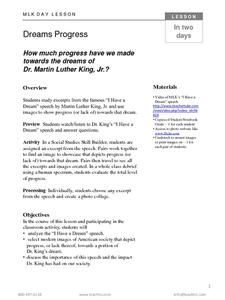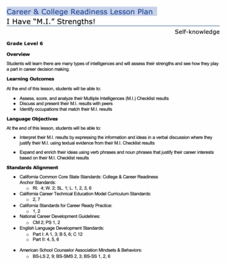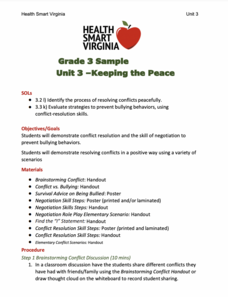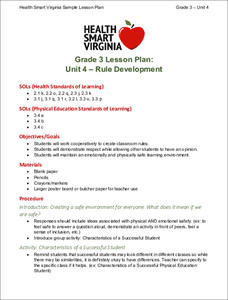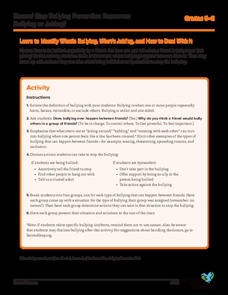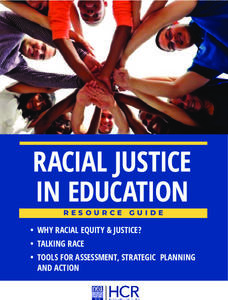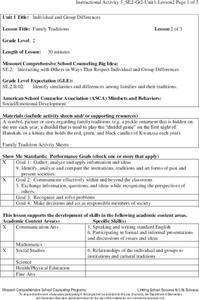Curated OER
Emotion Card Games
Emotions come in all shapes and sizes, and can be difficult for young learners or students with special needs to identify. Support them in gaining the valuable social skill of recognizing emotions and understanding empathy with this...
Self-esteem fund
Self‑Esteem Activity Guide (For Youth Leaders of Young Girls)
Did you know that over 70 percent of girls avoid certain activities because they feel bad about their looks? This fantastic resource includes 18 tried and true activities designed to help girls establish positive self-esteem.
Curated OER
Book Nook
A reading of Dr. Seuss's My Many Colored Days provides a great intro for a discussion of colors and how they can represent emotions and moods. Kids share the feelings they associate with various colors
TCI
Dreams Progress
Has society progressed to the dream Martin Luther King Jr. expressed in his famous address during the civil rights movement? Learners work with a partner to analyze one excerpt from King's "I Have A Dream" speech and find a current image...
California Department of Education
I Have “M.I.” Strengths!
Scholars complete an interest survey to discover their learning style. Based on their newfound knowledge, learners examine and discuss a list of careers that work best with their learning style.
Health Smart Virginia
Keeping the Peace
A lesson examines ways young learners can keep the peace with conflict resolution. Scholars share a conflict then discuss the difference between conflicts and bullying. Pupils read scenarios and practice their negation skills.
Health Smart Virginia
Communication
In preparation for a game in which they guess the type of communication used in a scenario, scholars examine and discuss the four types of communication: passive, aggressive, assertive, and passive-aggressive. Learners identify "I"...
Health Smart Virginia
Rule Development
A class discussion defines what it means to make the classroom a safe environment. To make their classroom safe, small groups work collaboratively to create a list of characteristics that make up successful learners. Groups share their...
Health Smart Virginia
Conflict Resolution
A lesson introduces the Peace Corner—a safe place to communicate feelings and problem solve. To gain practice, scholars role-play scenarios that require conflict resolution. Peers speak, listen, brainstorm solutions, shake hands, then...
Health Smart Virginia
Self Image
A 14-slide presentation walks a class through a lesson on self-image. While responding to scenarios and answering questions thoughtfully, scholars use pictures to complete a worksheet that offers describing words, emphasizes their inner...
Health Smart Virginia
Sporting Behavior
A game of Cooperation Tag and a Rock, Paper, Scissors Champion Challenge plays to the positive impact of good sporting behavior on one's social-emotional development. Scholars participate in these games with their peers then thoroughly...
Health Smart Virginia
Social Emotional Skills
A list of activity ideas, lessons, and resource links all focus on kindness, empathy, and mindfulness. Five steps offer experience in role-play, crafts, writing, thoughtful discussions, and more!
Health Smart Virginia
Circle of Control with a Kiss
A presentation walks scholars through an exercise of self-control. Using Hershey Kisses, learners listen closely and follow directions, leading them to a worksheet that looks at what they can and can't control. Pupils discuss their...
Teachers Pay Teachers
Multiple Intelligence Survey for Kids
Scholars rate 24 statements 0-5 then calculate their responses to discover their preferred intelligence and which intelligences require more practice.
Teachers Pay Teachers
What Kind of Smart Are You
Gain insight into the type of learners that fill your classroom. An eight-question survey asks scholars questions about themselves. Using their color-coded answers, they conclude their degree of intelligence in multiple areas—music,...
Nemours KidsHealth
Getting Along: Grades K-2
Boost social awareness with two activities focusing on getting along. In the first activity, scholars brainstorm ways to get along with their classmates and create four rules for the classroom. The second activity asks pupils to track...
Nemours KidsHealth
Cyberbulling: Grades 6-8
Cyberbullying is the focus of two lessons. First, scholars discuss what cyberbullying is, and examine a problem-solving approach to handling cyberbullying, then create brochures on the topic. Second, pupils discuss the effects...
Nemours KidsHealth
Bullying: Grades 6-8
Two lessons promote social awareness and build relationship skills. In lesson plan one, scholars define bullying and role-play coping strategies. Lesson two challenges learners to diffuse a bullying situation using their knowledge of...
Committee for Children
Learn to Identify What’s Bullying, What’s Joking, and How to Deal With It
A quick lesson takes a look at the differences between bullying and joking. Through whole-class discussion, scholars identify between the two behaviors and brainstorm actions to take to cease bullying behavior. Small groups share with...
National Education Association
Racial Justice in Education Resource Guide
Strive for racial justice within your classroom community with help from an 80-page resource guide. Five modules move scholars through thoughtful, and reflective grand conversations to making a plan, then taking action. Learners write...
Committee for Children
Students Learn to Stop Rumors Before They Start
Two activities look at how rumors are spread and ways class members can stop them. The first activity brings forth an in-depth conversation about how reporters gather information to write articles and how students can implement the same...
Missouri Department of Elementary
Acting Out Respect and Compromise
Puppets showcase the importance of being a good friend. Following a discussion about positive character traits, scholars create a paper-bag puppet and role-play scenarios with a peer.
Missouri Department of Elementary
Family Traditions
Honor family traditions with a instructional activity that examines the variety of winter celebrations. Class members discuss their family's traditions then complete a cut-and-paste practice page in which they match a picture to the name...
Healthy Native Youth
Chapter 2: Learning About Adolescence
The Native American symbol, The Circle of Life, represents life's spiritual, physical, mental, and emotional well being. By way of deep discussion, and two games, the lesson uses the Circle of Life to explore the stages of maturity,...





